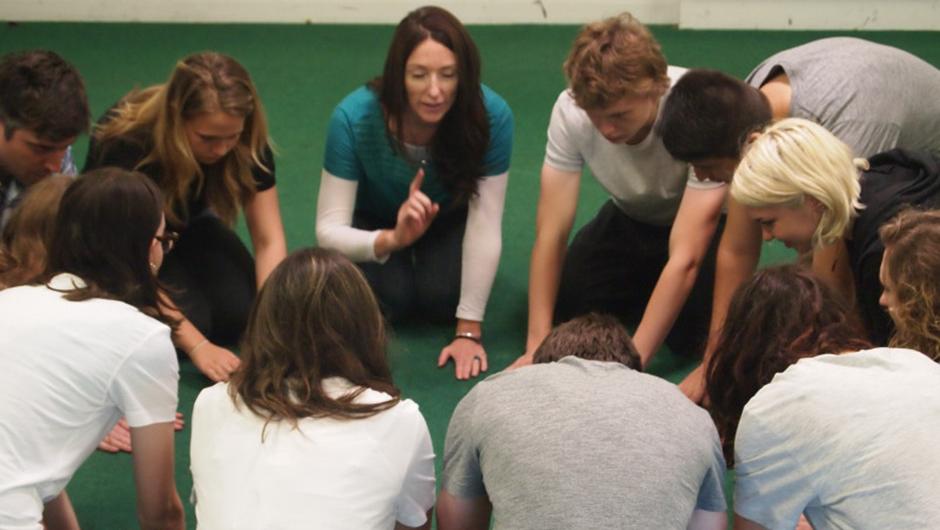25 June 2024
Teaching Shakespeare: 5 practical activities to engage your students
Alesha Tatum-Howe
Head of Theatre, Digital Theatre+
Shakespeare. Just the name alone can feel daunting. Once you say the name, your students will inevitably moan, roll their eyes, and beg to study something else – anything else. But, as we all know, Shakespeare is cool! And learning Shakespeare can be fun. There is a whole world of possibilities present in his plays. Situations and characters which your students will recognize, understand, and relate to... If they can just get beyond the stigma of the name.
What if we can make it so that when you say Shakespeare, your students are excited and interested and looking forward to what comes next? What if we can take the stigma away? Wouldn’t that be great?
Here are five (fun) Shakespeare activities that you can use with your students to help make lessons more accessible and interesting. These activities work for all levels of learners and age groups, and are a great way to get your students engaged with Shakespeare.
1. Shakespeare Circle
From Shakespeare in your Space: Romeo and Juliet and Macbeth
Shakespeare… Let’s address the elephant in the room. Taking away any sense of anxiety or uncertainty early on in the exploration encourages fuller participation. The following short exercises get your students talking about the playwright and the play.
- SHAKESPEARE IS: Bring the group into a circle. You say ‘Shakespeare is...?’ and then get each person in the circle to say what they know/think/feel about Shakespeare. All responses should be encouraged, e.g. Shakespeare is...old/a man/boring/dead/poetic/dramatic/bald, etc.
- [TITLE OF PLAY] IS: Now repeat the same question but use the title of the play you are studying for Shakespeare. For example: ‘Romeo and Juliet is...?’. Encourage the group to reveal what they think/feel/know about the play, e.g. Romeo and Juliet is...a love story/romantic/violent/stupid/not real/real/Italian/two families, etc.
- WALL NOTES: At the end of this sequence get all students to write down one word on a Post-it note to describe the play. Then get them to put the notes on the wall. This provides a visual resource for students to reflect upon as they study the play.
This activity can be extended to explore responses to specific characters or groups. For example, if you are studying Macbeth, you could ask ‘The witches are…’? Or if studying Hamlet, you could ask ‘Queen Gertrude is…?’. Invite the students to give their responses to the question. Follow up each circle/question with the Wall Notes activity.
.png?width=600&name=Shakespeare%20in%20Your%20Space%20(1).png) Shakespeare in your Space: Macbeth
Shakespeare in your Space: Macbeth
2. Tableaux
Found in multiple Discover, Explore, Assess: Teacher’s Notes including Othello, Romeo and Juliet, The Comedy of Errors, and Twelfth Night
Assign characters from the play to your students and ask them to create tableaux showing the relationships between given characters in various.
- Encourage students to use their characterization skills, including body language and gestures, as well as consider their use of levels and proxemics. This will allow students to visualize the relationships between the different characters and the situations they are in.
Proxemics refers to the physical space between the actors and how it can be used to show different relationships. The different shapes and spacing created on stage will tell the audience different things about the action and the characters. For example, different interpretations would be made about two characters sitting very close to each other on a sofa, in comparison to two characters sitting on opposite ends of the sofa.
Consider the following:
- Give students different scenarios from the play to base their tableaux on. You could also have them explore scenes that are spoken about, but not seen onstage.
- Question students on their positions in relation to each other. Students should be encouraged to use the character information when making decisions about their tableaux.
- Ask students to improvise small scenes from their tableaux and encourage them to think about how these characters may speak and interact with one another. This will support students in developing their characterization skills and allow them to consider the way an actor may perform the role.
- Advanced students could work in larger groups and add in more characters to see how the image changes when new characters are added.
3. Hot Seating
Found in multiple Discover, Explore, Assess Teacher’s Notes including Othello, Romeo and Juliet, The Comedy of Errors, and Twelfth Night
Have students perform roles in the play you are studying and further develop their understanding. This activity works well with a class that has high energy. Students will take turns to sit in the "hot seat" and answer questions in character from other members of the class. Students in the "hot seat" should be encouraged to adopt the appropriate characterization when they are in a role.
If they do not know the answer to a question, students should be encouraged to improvise based on their initial understanding of the character from any classroom discussions and their own prior knowledge. This strategy will allow all students the opportunity to become more comfortable performing while learning more about the characters.
As you prepare, you could consider the following ideas:
- Allocate a scribe to make notes based on the responses from students in the "hot seat." This will enable students to have a record of some of the responses that were given instead of being required to remember everything that was said. They can then use the notes as a starting point for discussions after the activity.
- Prepare a list of questions to be asked and give them to each student to support learners during the activity.
- Allow students to prepare questions in advance of the activity.
- Allow the student in the "hot seat" to have notes on the character or a copy of the script in front of them to help answer the questions.
- Model the activity prior to the students taking part, so they understand how it works.
- Have students ask yes/no questions only.
%20(2).jpg?width=600&name=shutterstock_1336613201%20(1)%20(2).jpg)
4. Working with the text: Soliloquies
Found in Shakespeare in your Space: Macbeth
The following exercise can involve your whole group or you may wish to divide the group in two. The aim of the exercise is to give your group an experience of speaking and hearing the text in the most connected way possible and to realise its potential.
Select a soliloquy from the play and then ask a student to volunteer to read this aloud in the middle of the circle.
- Read it through once out aloud.
- Get your volunteer to read it again and this time the listeners must say, ‘What?’, at the end of each verse line. The reader must then repeat the line they’ve just spoken in response to the question. Do this several times.
- Then gather the group closer around the speaker and as the speech is spoken aloud get the group to gently tap the person speaking. This will stimulate a series of responses that the speaker should channel into how they speak the speech. Do this several times.
- At the end of this sequence place a chair in the centre of the room and then hot seat the speaker in the role (see exercise above). Encourage your group to feed back on what they saw and heard.
5. Working with the text: Scenes
From Shakespeare in your Space: Romeo and Juliet and Macbeth
This sequence peels back the text and helps students get closer to the characters and what they are saying. Choose a good section of the text you are studying for your students to work with and have them do the following:
- BACK TO BACK: In pairs, get the students to sit on the floor back to back and then read the scene out together, each taking a part.
- FAR APART: Next, get the students to stand as far apart from each other in the space as possible and read the scene again.
- OVER THE TOP: Bring the pairs together and get them to perform the scene in a completely over-the-top fashion.
- CHAT: Finally, ask them to speak it quietly and gently to each other in a conversational form.
- WALL NOTES: Have students write key things they learned about the characters and the scene on post-it notes and attach them to the wall.
These activities and more can be found within various resources on Digital Theatre+. Each one has been created to encourage student engagement and make Shakespeare accessible to all.
I hope your students enjoy these exercises, and discover that Shakespeare is cool and that learning Shakespeare can be fun!
Related blogs
Making Shakespeare Fun: 5 activities for your middle schoolers
Teaching Shakespeare and tired of hearing groans and seeing eye rolls whenever you mention him in...
Read more15 Tips For Putting on a Successful Shakespeare Festival
In today's blog, High School English teacher Laura Sheridan shares her top tips for putting on a...
Read moreResources to engage younger learners
With social media now a permanent fixture in the lives – and screens – of most students, it’s no...
Read moreGet the latest teaching tips straight to your inbox
Explore free lesson ideas and inspiration, education news, teaching trends and much more by signing up to regular blog updates!





